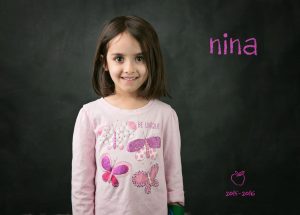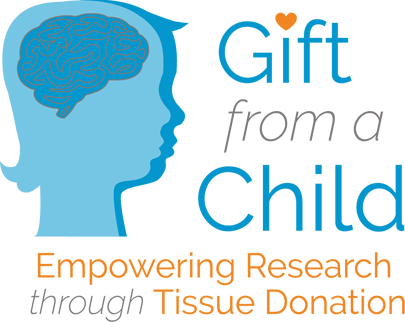What Cancer Taught Me

Luke Reynolds won 1st Place in the
2019 Ben Strauss Youth Program
Middle School
Teen Essay Contest
This is his winning essay
What Cancer Taught Me
One night around two and a half years ago, my little sister Nina said that her tummy hurt. The next day, we found out she had cancer. We learned that it was neuroblastoma, a difficult cancer to cure.
Nina, my parents and I fought the disease with everything we had. We hoped that she would be fully cured, or at worst would have to have a few side effects from the chemotherapy, immunotherapy, and radiation she received. Instead, we got a third unimaginable option as her cancer progressed through every treatment including clinical trials. Just ten months later, my beautiful, funny, sweet six-year old sister lost her life just as it was starting. My family and I were in complete shock, and are still in shock two years later. Even now, I wake up and think Nina is still here, doing some big art project in her room. Then I remember what happened to her and to us.
Those ten months were the hardest time of my life, living without my sister or parents for weeks at a time, and worrying. But my parents always reminded us that many people were fighting along with us. My grandparents came all the way from India to take care of me while my parents stayed with Nina. My parents were able to work remotely from the hospital. My Uncle flew in from Chicago twenty times over the next ten months. I have always had a lot of friends, but then I learned what good friends I had. I could tell they felt bad for us and wanted to support me. Their parents signed me up for a soccer league, took me to my practices and matches, even loaning me cleats since I had outgrown my old ones.Friends and family sent Nina and me so many presents that some are still unopened in our basement.
I went to see my sister after school, and spent the weekends at the hospital with her. It was hard to be there – they were always changing Nina’s NG tubes and port needles, horrible things to watch. She was gentle and sensitive before she got sick. She now had to endure so much. The medicines made her throw up all day long; some gave her double vision, and she sometimes had ringing in her ears.
Nina became so strong and brave through this. She had always been quiet and shy – now she asked her doctors about every single medicine and even told them how she figured out she didn’t need a medicine called Fentanyl anymore! It was quite funny, but I always knew my sister was a smart kid.
 Nina always tried to have fun, doing art projects on her hospital bed, learning to sew pillowcases, reading, and watching ‘Strawberry Shortcake’ on the iPad. She made up jokes and puns to tell her nurses. For her birthday, we went to Long Beach Island, which she loved. Her friends came over for quiet play dates whenever she was home. She tried to stay positive even when treatment after treatment failed to shrink her tumor.
Nina always tried to have fun, doing art projects on her hospital bed, learning to sew pillowcases, reading, and watching ‘Strawberry Shortcake’ on the iPad. She made up jokes and puns to tell her nurses. For her birthday, we went to Long Beach Island, which she loved. Her friends came over for quiet play dates whenever she was home. She tried to stay positive even when treatment after treatment failed to shrink her tumor.
People say that when something bad happens, you learn who your friends are. I learned from Nina’s illness that we have many people who care about my family, and a community that supports us. I learned that people and life are basically good, even when something terrible happens, and sometimes especially when something terrible happens. We only have one life – we must use it well. Nina got only six years, but I think she used it well. I also learned some shocking facts about children’s cancers. Cure rates, especially for solid tumors like Nina’s, haven’t improved in decades. One in five children with cancer die within five years (1). Only four percent of cancer research funding goes to children (2). Even though children often get very different cancers from adults, new medication is rarely developed specifically for kids. Even among kids who survive cancer, 60-95% will have serious side effects, including a second cancer caused by treatment (3).
I want to share what we’ve learned about pediatric cancer with everyone so that we can work together to find a solution for it. I also know that I want to grow up to treat children’s cancers so that no other boy will have to miss his little sister every time he wakes up.
“Key Statistics for Childhood Cancers.” American Cancer Society,
www.cancer.org/cancer/cancer-in-children/key-statistics.html.
“Facts About Childhood Cancer.” National Pediatric Cancer Foundation,
nationalpcf.org/facts-about-childhood-cancer
Armstrong, Gregory T, et al. “Late Mortality among 5-Year Survivors of Childhood
Cancer: a Summary from the Childhood Cancer Survivor Study.” Journal of Clinical
Oncology : Official Journal of the American Society of Clinical Oncology, American Society of
Clinical Oncology, 10 May 2009, www.ncbi.nlm.nih.gov/pubmed/19332714/.
Recent Publications from Centers of Excellence
Harmonization of Post-mortem Donations for Pediatric Brain Tumors and Molecular Characterization of Difuse Midline Gliomas
Children diagnosed with brain tumors have the lowest overall survival of all pediatric cancers. To address the paucity of tissue for biological studies, we have established a comprehensive protocol for the coordination and processing of donated specimens at postmortem. Since 2010, 60 postmortem pediatric brain tumor donations from 26 institutions were coordinated and collected. Patient derived xenograft models and cell cultures were successfully created (76% and 44% of attempts respectively), irrespective of postmortem processing time. Histological analysis of mid-sagittal whole brain sections revealed evidence of treatment response, immune cell infiltration and the migratory path of infiltrating H3K27M DMG cells into other midline structures and cerebral lobes. Sequencing of primary and disseminated tumors confirmed the presence of oncogenic driver mutations and their obligate partners. Our findings highlight the importance of postmortem tissue donations as an invaluable resource to accelerate research, potentially leading to improved outcomes for children with aggressive brain tumors. Read Full Publication
 Dr. Monje-Deisseroth and her team at Stanford University recently published a paper detailing how gliomas are able to “hijack” the brain's communication system.
Dr. Monje-Deisseroth and her team at Stanford University recently published a paper detailing how gliomas are able to “hijack” the brain's communication system.
Published in Nature: High-grade gliomas are lethal brain cancers whose progression is robustly regulated by neuronal activity. Activity-regulated release of growth factors promotes glioma growth, but this alone is insufficient to explain the effect that neuronal activity exerts on glioma progression. Here we show that neuron and glioma interactions include electrochemical communication through bona fide AMPA receptor-dependent neuron–glioma synapses. Read More

Congratulations to two of our Center of Excellence teams lead by Dr Javad Nazarian and Dr. Michelle Monje on their recent groundbreaking research publication. Due in part to increased access to post-mortem tissue the teams were able to study a larger sample of DIPG tumors. Diffuse intrinsic pontine glioma is a lethal pediatric brain cancer characterized by H3K27M histone mutation. Nagaraja et al. characterize a large cohort of rare primary tumors and normal pontine tissue to reveal active regulatory element heterogeneity dependent upon the histone variant and cell context in which the mutation occurs. Read More
the teams were able to study a larger sample of DIPG tumors. Diffuse intrinsic pontine glioma is a lethal pediatric brain cancer characterized by H3K27M histone mutation. Nagaraja et al. characterize a large cohort of rare primary tumors and normal pontine tissue to reveal active regulatory element heterogeneity dependent upon the histone variant and cell context in which the mutation occurs. Read More
Research Breakthroughs Resulting from Autopsy Tissue
Donovan_et_al_Locoregional_delivery_CAR-T_cells_Nat_Med2020_opt
Potent antitumor efficacy of anti-GD2 CAR T cells in H3-K27M+ diffuse midline gliomas_2018
Non-inflammatory tumor microenvironment of diffuse intrinsic pontine glioma_2018
Intertumoral Heterogeneity within Medulloblastoma Subgroups_Sick Kids Publication_June 2017
A Protocol for Rapid Post-mortem Cell Culture of Diffuse Intrinsic Pontine Glioma (DIPG)_March 2017
Neural Precursor-Derived Pleiotrophin Mediates Subventricular Zone Invasion by Glioma_Aug 2017
Divergent clonal selection dominates medulloblastoma at recurrence
Models Pave the Way for Improved Outcomes in Medulloblastoma_August 2016
Functionally defined therapeutic targets in diffuse intrinsic pontine glioma_June 2015
Neuronal Activity Promotes Glioma Growth through Neuroligin-3 Secretion_May 2015 Cell
Stanford Research Paper: Electrical and synaptic integration of glioma into neural circuits
Rapid autopsy of a patient with recurrent anaplastic ependymoma.
Next-Generation Rapid Autopsies Enable Tumor Evolution Tracking and Generation of Preclinical Models
Why Autopsy Tissue is Needed to Empower Research
Pediatric Brain Cancer Tissue Donation article_2016
Overcoming Autopsy Barriers in Pediatric Cancer Research
Study on Collection of autopsy tissue in DIPG patients_Oct 2010
Next-Generation Rapid Autopsies Enable Tumor Evolution Tracking_January 2018
The clinical, research, and social value of autopsy after any cancer death
Gift from a Child
Is a Swifty Foundation Program
Swifty is a recipient of the GuideStar Gold Seal of Transparency






